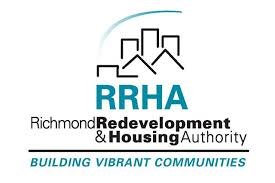Groundbreaking Oct. 14 on initial Fay Towers replacement
Jeremy M. Lazarus | 10/9/2015, 7:55 a.m.
The pace is finally picking up on efforts to replace the 200-unit Fay Towers in Gilpin Court and move current residents to new apartments.
On Wednesday, Oct. 14, the Richmond Redevelopment and Housing Authority and Washington-based nonprofit Community Preservation and Development Corp. (CPDC) will start work on the first new units for Fay Tower residents.
The $11 million project involves the restoration of 77 apartments in a former school building two miles away in the Highland Park neighborhood on North Side.
RRHA, which is hosting the groundbreaking event in marking its 75th anniversary of providing public housing, has been promising speedy action to replace Fay Towers since being awarded federal authorization to make it happen in early 2013.
One question left unanswered at this point is the role that African-American contractors and workers will play in the overhaul of the Highland Park school building at 1221 E. Brookland Park Blvd.
The start comes about six months after CPDC announced the project. It took more time than anticipated, RRHA said, to complete the financing details. CPDC had expected to start work in August.
The building began life as the Highland Park School in Henrico County when it opened in 1909. The building remains a landmark 106 years later with its distinctive, Mediterranean-style tiled roof at the community’s Six Points intersections.
Closed as a school in 1978 following a damaging fire, the building moldered until it was remodeled and converted into 77 apartments for seniors in 1995. Fifteen years later, after the Great Recession, Brookland Park Plaza had fallen into serious disrepair, ending in a bank foreclosure in 2011. By then, the units had become a squat for the homeless after thieves stripped out the copper pipes, according to CPDC officials.
In November 2013, after being selected as RRHA’s partner for replacing Fay Towers, CPDC picked up the building for $600,000 from Wells Fargo Bank — less than half the city’s assessed value of $1.35 million.
CPDC expects to renovate the building in a year and have it fully leased by Christmas 2016, if all goes well. That’s not a moment too soon for Fay Tower residents, who are seeing their current high-rise decay. RRHA has yet to fix the roof that has been leaking for months, though the authority is still making plans to do so.
CPDC and RRHA are still trying to figure how to replace the other 123 units in Fay Towers. RRHA previously indicated that 55 units could be relocated into the now vacant Baker School building in Gilpin Court, but little progress has been made.
Meanwhile, with the Highland Park school redo set to go, CPDC is planning to do more in Highland Park. Earlier this year, CPDC purchased three nearby parcels, including a decaying church that served for years as the home of the Bethlehem Community Center and Day Care. CPDC acquired the properties at 1224, 1226 and 1228 E. Brookland Park Blvd. for $200,000 from the Fresh Anointing Cathedral.
J. Michael Pitchford, CPDC’s president and CEO, and Christopher LoPiano, the CPDC senior vice president for real estate development, said the plan is to demolish the existing buildings and eventually replace them with a mix of apartments and retail stores.
“We see CPDC’s new Highland Park Senior Apartments as assisting the broader revitalization of Six Points,” said the area’s City Council representative, Ellen F. Robertson, 6th District.
She called it important for CPDC “to go beyond senior housing” and build on the investments already made by the nonprofit Boaz & Ruth, private businesses and housing groups to revitalize the area.
“We want these new apartments to be a connecting link to neighborhood improvement rather than an isolated island,” Ms. Robertson said.








